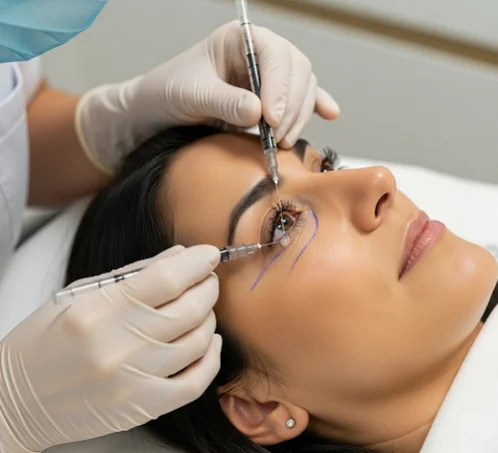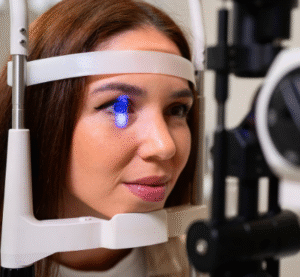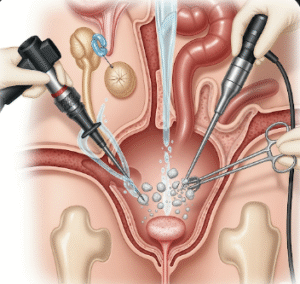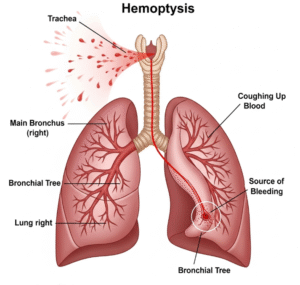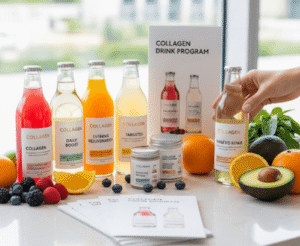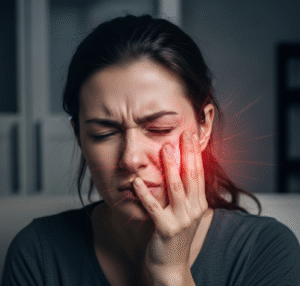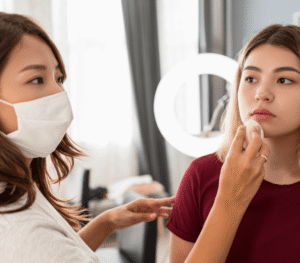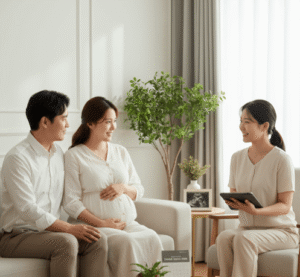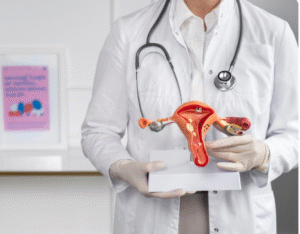🟢 What it is
A Tear Trough Filler in Korea is a non-surgical cosmetic procedure that uses dermal fillers—most commonly Hyaluronic Acid (HA)—to treat hollowing or dark circles under the eyes. The tear trough is the area between the lower eyelid and the upper cheek. As people age, or due to genetics, this area may appear sunken, shadowed, or tired-looking.
By carefully injecting filler into this region, doctors in Korea:
- Restore lost volume.
- Reduce the appearance of dark circles.
- Smooth the transition between the under-eye and cheek.
- Rejuvenate the mid-face.
Korean clinics specialize in subtle and precise filler techniques that maintain a natural look without puffiness or an “overfilled” appearance.
🟢 Why it’s Done
Tear trough fillers are performed for both aesthetic improvement and rejuvenation:
➡️ Reduce tired appearance: Fills hollows under the eyes that make patients look fatigued.
➡️ Brighten dark circles: Minimizes shadowing caused by volume loss.
➡️ Youthful refresh: Restores plumpness for a healthier look.
➡️ Smooth facial transitions: Improves harmony between lower eyelid and upper cheek.
➡️ Non-surgical option: Avoids invasive lower eyelid surgery (blepharoplasty).
In Korea, tear trough filler is often combined with cheek fillers or skin boosters to enhance mid-face rejuvenation.
🟢 Alternatives
While tear trough fillers are highly effective, other treatments may be considered depending on the cause of under-eye concerns:
🔹 Fat Grafting: Longer-lasting but less precise than fillers.
🔹 Lower Blepharoplasty (surgery): Best for severe under-eye bags or sagging skin.
🔹 Skin Boosters (Rejuran Healer, Profhilo): Improve skin texture and hydration.
🔹 Laser treatments (Fraxel, CO2, IPL): Reduce pigmentation and fine lines.
🔹 PRP (Platelet-Rich Plasma): Improves under-eye skin quality and color naturally.
🔹 Topical creams: Mild improvement for pigmentation but limited for hollowing.
🟢 Preparation
Before receiving a tear trough filler in Korea, patients undergo a thorough evaluation since the under-eye area is delicate:
➡️ Consultation: Doctors assess if hollows are due to volume loss, pigmentation, or skin laxity.
➡️ Medical history: Patients disclose allergies, bleeding disorders, or previous filler treatments.
➡️ Avoid blood thinners: Stop aspirin, ibuprofen, fish oil, and alcohol 3–5 days before treatment.
➡️ Skin care adjustment: Avoid strong peels or retinoids before procedure.
➡️ Expectations: Korean doctors emphasize realistic outcomes and may suggest combining filler with other treatments for optimal results.
🟢 How it’s Done
The procedure is highly delicate and usually takes 20–30 minutes:
- Cleansing & sterilization of the under-eye area.
- Numbing: Topical anesthetic is applied (some HA fillers also contain lidocaine).
- Injection method:
- Cannula technique (most common in Korea) to reduce bruising and avoid blood vessels.
- Small amounts of filler are layered gradually to prevent puffiness.
- Shaping & smoothing: Doctor gently massages to blend filler with surrounding tissues.
- Final check: Ensures symmetry and natural appearance.
Korean clinics often combine this with soothing masks or LED therapy immediately after to minimize swelling.
🟢 Recovery
Recovery is usually quick:
🔹 Downtime: Minimal—most patients return to daily life immediately.
🔹 Swelling & redness: May last 1–2 days.
🔹 Bruising: Can occur but usually resolves in a week.
🔹 Results: Immediate improvement, with final settling in 1–2 weeks.
✅ Post-care in Korea includes:
- Avoid heavy exercise, alcohol, and saunas for 24–48 hours.
- Do not massage or press under-eye area.
- Use cold compress to reduce swelling.
- Apply sunscreen and avoid excessive sun exposure.
🟢 Complications
Tear trough fillers are safe when performed by experienced Korean doctors, but the under-eye area is considered high risk:
⚠️ Mild issues:
- Swelling, redness, or tenderness.
- Temporary unevenness.
⚠️ More serious risks (rare):
- Tyndall effect (bluish tint under skin if filler is placed too superficially).
- Vascular occlusion leading to skin necrosis or, in severe cases, vision issues.
- Overfilling or puffiness if too much filler is injected.
- Migration of filler into unintended areas.
➡️ Korean doctors minimize these risks using micro-cannula techniques, small doses, and premium fillers, and keep hyaluronidase available to dissolve HA fillers if needed.
🟢 Treatment Options in Korea
Korea is renowned for advanced filler technology and natural aesthetic results:
🔹 Popular filler brands for tear troughs:
- Korean: Yvoire, Neuramis, Replengen, Revolax, Dermalax.
- Global: Restylane, Juvederm Volbella, Teosyal Redensity II (specially formulated for under-eyes).
🔹 Approaches in Korea:
- Micro-dosing technique: Injects tiny amounts for a natural finish.
- Blending with cheek fillers: Restores mid-face volume for smoother results.
- Combination with skin boosters: Improves both volume and skin texture.
🔹 Cost in Korea:
- $300–$600 per session, depending on brand and technique.
- Premium filler options may cost $600–$900.
- Results last 9–12 months with HA fillers.
🟢 Final Thoughts
Tear Trough Fillers in Korea are among the most effective and popular treatments for rejuvenating the under-eye area. They provide instant brightness, smoother transitions, and a refreshed appearance without surgery.
➡️ Best suited for those with under-eye hollowness or mild to moderate dark circles caused by volume loss.
➡️ With Korea’s advanced filler products, expert micro-injection techniques, and natural aesthetic philosophy, patients can achieve safe and subtle results.
In summary: Tear trough fillers in Korea are a safe, customizable, and minimally invasive solution that restores youthfulness and vitality to the under-eye area, aligning perfectly with Korean beauty ideals.

